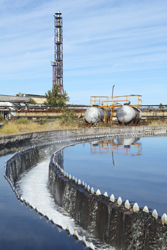Building a water decontamination reactor
The chemical industry produces a wide range of hard-to-remove waste products that, until recently, found their way into the water supply. Strict new EU laws mean that this wastewater cannot be discarded directly, but needs to be decontaminated on site. With the support of EU funding, the WATERPLASMA(opens in new window) project was established to develop a chemical- and filter-free decontamination system. This was achieved by building a reactor that decontaminates water using atmospheric plasma, which is supercharged atoms kept at atmospheric pressure. Researchers designed and built a prototype of a one-atmosphere uniform glow discharge reactor, which in the past has removed contaminants from wastewater effectively. The prototype included water and gas control systems, sensors, a full software package for monitoring, control and data collection, and a user interface. The prototype had mixed successes: some contaminants showed 100 % removal in a short timeframe, while others required longer timeframes or an adjusted pH. The reactor was also more effective at lower contaminant concentrations. Further work on the prototype is required to improve the materials used in its construction and modify the reactor configuration for better plasma mixing. The end result will be effective as a finishing process for decontaminating industrial wastewater, or as a final step in the purification of drinking water.







